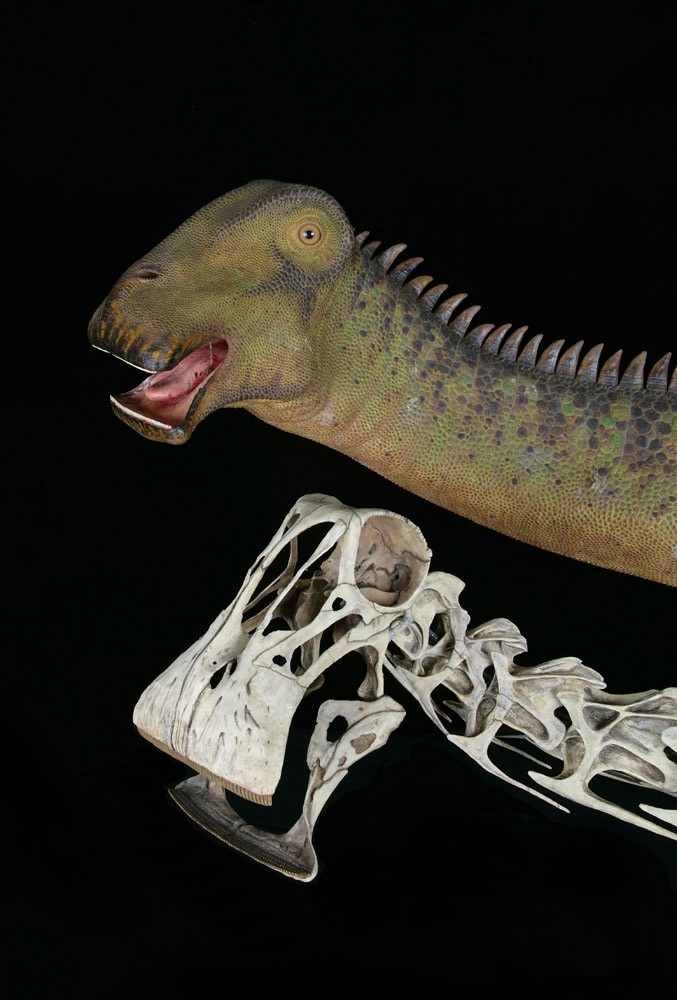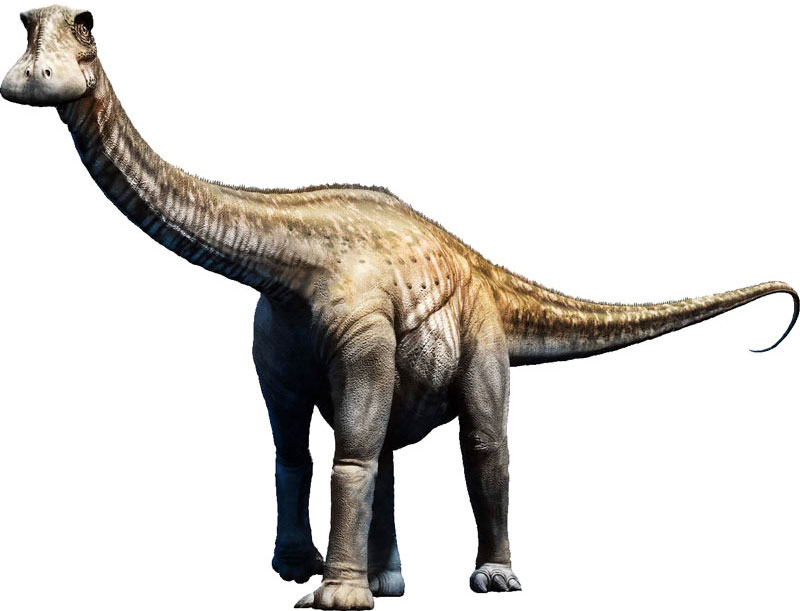Nigersaurus - The Ancient Grazer With 500 Teeth
Have you ever stopped to think about the incredible creatures that once walked our planet, millions upon millions of years ago? It's a pretty wild thought, honestly. We're talking about a time so far back, it's almost impossible to picture. Yet, thanks to some amazing finds, we can piece together stories about these long-gone animals. One such creature, a truly fascinating one, is a dinosaur known as Nigersaurus. This particular ancient animal has some features that really make it stand out from the crowd of other long-necked dinosaurs, giving us, you know, a very clear picture of how life once was.
This long-necked plant-eater, which we call Nigersaurus, was around during a time period known as the middle Cretaceous. That was, like, a really long time ago, somewhere between 115 and 105 million years back. It lived in a part of the world that we now know as the Republic of Niger, in West Africa. Imagine a place that today is a vast desert, but back then, it was a lush, watery landscape. This creature, actually, was just one part of a whole collection of unusual animals that shared its home.
The Nigersaurus is especially famous for a particular part of its body: its mouth. It had a head that was, in a way, very light, but inside, there was a whole system of teeth that allowed it to eat plants without stopping. This unique feature, its incredibly toothy grin, is something that truly sets it apart from many other dinosaurs we know about. We're going to take a closer look at what made this ancient grazer so special, so, you know, stick around.
Table of Contents
- What Kind of Creature Was Nigersaurus, Anyway?
- Where Did Nigersaurus Live - A Glimpse into its Old Home?
- How Did Nigersaurus Manage to Graze Nonstop?
- Was Nigersaurus a True Giant, or Just a Bit Smaller?
What Kind of Creature Was Nigersaurus, Anyway?
The creature we call Nigersaurus was, in fact, a kind of long-necked dinosaur, a sauropod, but it belonged to a particular group within that family called rebbachisaurids. These animals were known for their long necks and tails, and they spent their days munching on plants. This specific animal, you know, lived during a very old stretch of time, something like 115 to 105 million years ago, in the middle part of the Cretaceous period. It was a plant-eating animal, as a matter of fact, that wandered the Earth when the middle Cretaceous period was in full swing.
So, this Nigersaurus was first recognized by people who study old bones and traces of life in the year 2000. It got its name, actually, in honor of the country where its remains were found, the Republic of Niger. The name itself, Nigersaurus, is made up of two parts. There's "Niger," which refers to the country, and "saurus," which is a word that means "reptile." It's a pretty straightforward name, really, telling you both where it was found and what kind of animal it was.
The Nigersaurus - Its Place in Time
The Nigersaurus was around about 110 million years ago, which is, you know, a truly immense stretch of time. It was a member of the sauropod family, but it was a specific type called a rebbachisaurid sauropod. These creatures were part of a diverse collection of life forms that existed during the middle Cretaceous. The time it lived was, in some respects, a very busy one for dinosaurs and other ancient animals. It was a time when various kinds of creatures shared the land.
This particular dinosaur, the Nigersaurus, was found in a place called the Elrhaz Formation, within an area known as Gadoufaoua, which is in the Republic of Niger. Its remains were first described in the year 1976, though it wasn't officially named until much later, in 2000. It's interesting to think about how long it took for this animal to be properly identified and named after its discovery. That's how it goes sometimes with these old bones, you know, it takes a bit of time.
Where Did Nigersaurus Live - A Glimpse into its Old Home?
The Nigersaurus lived in what is now the Republic of Niger, in West Africa. It was around about 110 million years ago. While the remains of this animal were found in what is today the Sahara Desert, the place where Nigersaurus made its home was very different back then. It was, you know, a floodplain. Imagine wide rivers flowing through the land, with tall conifer forests and lots of green, leafy plants everywhere. It was a lush environment, a far cry from the dry sands we see there today.
This ancient land was home to a whole collection of unusual creatures, not just the Nigersaurus. There were other strange dinosaurs, and quite a few different kinds of crocodilians, which are like modern-day crocodiles. Flying reptiles, too, shared the skies above. And in the waters, you'd find various kinds of fish, turtles, and even snakes. It was, in a way, a very busy ecosystem, with many different types of animals living side by side, or sometimes, you know, eating each other.
Discovering the Nigersaurus in West Africa
The first signs of this creature, the Nigersaurus, were found in the Republic of Niger, and that's where it gets its name. Its remains were first described in 1976. This country in West Africa is, actually, very important to the story of this dinosaur. The name "Nigersaurus" literally means "Niger's lizard," which is pretty cool, you know, how it ties directly to its discovery location. It's considered one of the more unusual dinosaurs ever found, partly because of its very distinctive skull.
The discovery site, Gadoufaoua, within the Elrhaz Formation, has given us a lot of information about this ancient animal. It’s the place where the fossils were first brought to light. This area was, basically, a hub of ancient life, and finding the Nigersaurus there helped paint a clearer picture of what the world was like during the middle Cretaceous. It's a testament to the hard work of those who search for and study these old bones, that we know so much about this creature today, you know.
How Did Nigersaurus Manage to Graze Nonstop?
The Nigersaurus is most known for its very distinct skull and jaw. This creature had, you know, a head that was surprisingly light, almost like air, but its mouth was packed with what you might call serious eating power. It had a special ability to grow teeth very quickly, which was essential for its lifestyle. Its mouth, in fact, was built for continuous grazing, meaning it could just keep eating and eating without much interruption. This design was, honestly, quite clever for a plant-eating animal.
The most striking thing about its mouth was the sheer number of teeth it had. The Nigersaurus had, something like, 500 slender teeth. These teeth were arranged in rows that were packed together very tightly. This setup allowed it to crop plants efficiently. It's a very unusual arrangement, really, and quite different from what you see in most other long-necked dinosaurs. This dental arrangement was, in a way, its secret to a constant food supply.
The Nigersaurus's Amazing Dental Setup
The Nigersaurus was, indeed, famous for having a jaw filled with 500 slender teeth. These teeth were very uniform in shape and were set in straight rows. This arrangement was perfect for stripping leaves from plants. What's even more incredible is how often it replaced its teeth. This creature, actually, replaced its teeth every 14 days. Think about that for a moment: a whole new set of chompers every two weeks! That's a pretty fast turnover, you know, for any animal.
This constant tooth replacement meant that the Nigersaurus always had sharp tools for eating. Its wide jaws, which were almost comically wide for a sauropod, were part of this efficient eating machine. This unique mouth structure, with its rapidly growing teeth, allowed the Nigersaurus to be a very effective grazer, constantly processing large amounts of plant material. It was, in some respects, a perfect design for a creature that needed to eat a lot to sustain its body size, basically.
Was Nigersaurus a True Giant, or Just a Bit Smaller?
While the Nigersaurus was a sauropod, a group known for its truly massive members, it was actually quite small compared to some of its more famous relatives. When you think of sauropods, you might picture giants like Brachiosaurus or Diplodocus, which were truly enormous. The Nigersaurus, however, was a bit more modest in size. It was, you know, relatively small for its kind, but still a large animal by today's standards.
To give you a better idea of its size, the Nigersaurus measured about 30 feet, which is roughly 9 meters, in length. That's about the length of a regular bus. It weighed somewhere between 1.9 and 4 tons. To put that into perspective, that's similar to the weight of a modern African elephant. So, while it wasn't a mega-giant like some other long-necked dinosaurs, it was still a very substantial animal, definitely not a tiny creature, you know.
The Nigersaurus - Comparing its Size
The Nigersaurus, with its 30-foot length, was, basically, a medium-sized sauropod. Its height at the hip was about 8 feet, or 2.4 meters. So, it stood pretty tall, but its body wasn't as long or as heavy as some of the truly colossal plant-eaters. It was, in a way, a more compact version of the long-necked dinosaur. This size allowed it to move around its ancient floodplain home quite effectively, maybe, you know, even more easily than its super-sized cousins.
Its relatively short neck, when compared to the length of its tail, also made it somewhat unusual among sauropods. Most long-necked dinosaurs are known for their incredibly long necks. The Nigersaurus, however, had a neck that was a bit shorter than what you might expect, which, you know, added to its unique appearance. This combination of a more modest size and a shorter neck, along with its wide, toothy mouth, makes the Nigersaurus a very distinct and interesting creature from the ancient world.
This article has explored the Nigersaurus, a rebbachisaurid sauropod dinosaur that lived about 115 to 105 million years ago during the middle Cretaceous period. It was discovered in the Elrhaz Formation in Gadoufaoua, Niger, and was named after the country. Known for its distinct skull and jaw, it possessed approximately 500 slender teeth arranged in tightly packed rows, which it replaced every 14 days for continuous grazing. While a sauropod, it was relatively small compared to others, measuring about 30 feet in length and weighing between 1.9 and 4 tons, similar to a modern African elephant. It lived in a lush floodplain environment with rivers and forests, alongside various other ancient animals, a very different landscape from the Sahara Desert of today.

Nigersaurus Pictures & Facts - The Dinosaur Database

Nigersaurus | Life, Habitat, Diet, Discovery, and Facts

Nigersaurus ~ Everything You Need to Know with Photos | Videos